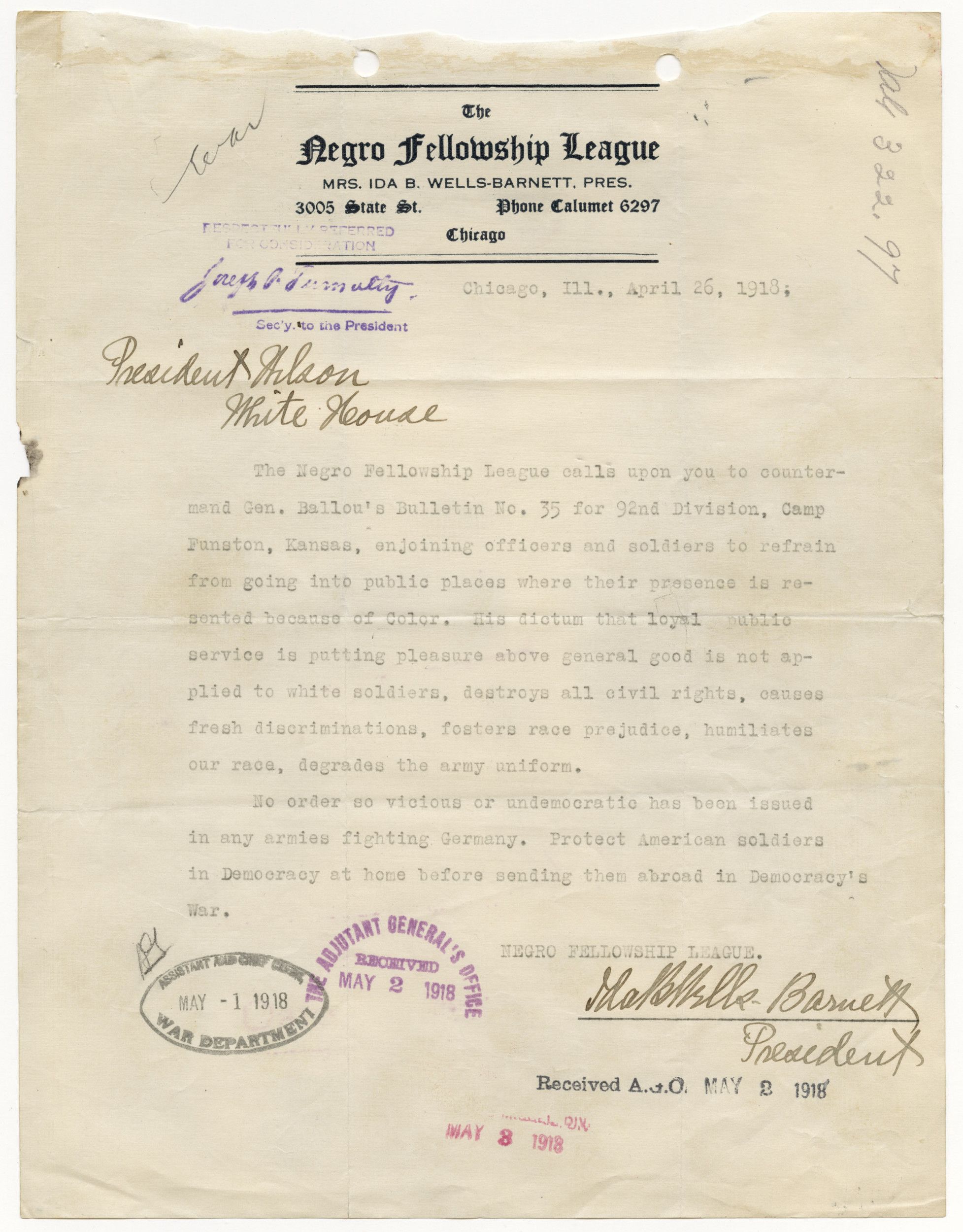African American Soldiers and Civil Rights During WWI
Seeing the Big Picture
All documents and text associated with this activity are printed below, followed by a worksheet for student responses.Introduction
You will see a variety of photographs and documents from World War I and immediately following the war in the grid below. Click on each primary source to carefully analyze it, then match it to the correct description.As you work, make a list of how African Americans were being denied their civil rights. Can you put their treatment into categories?
Name:
Class:
Class:
Worksheet
African American Soldiers and Civil Rights During WWI
Seeing the Big Picture
Examine the documents and text included in this activity. Consider how each document or piece of text relates to each other and create matched pairs. Write the text or document number next to its match below. Write your conclusion response in the space provided.1
2
3
4
5
6
1
Activity Element
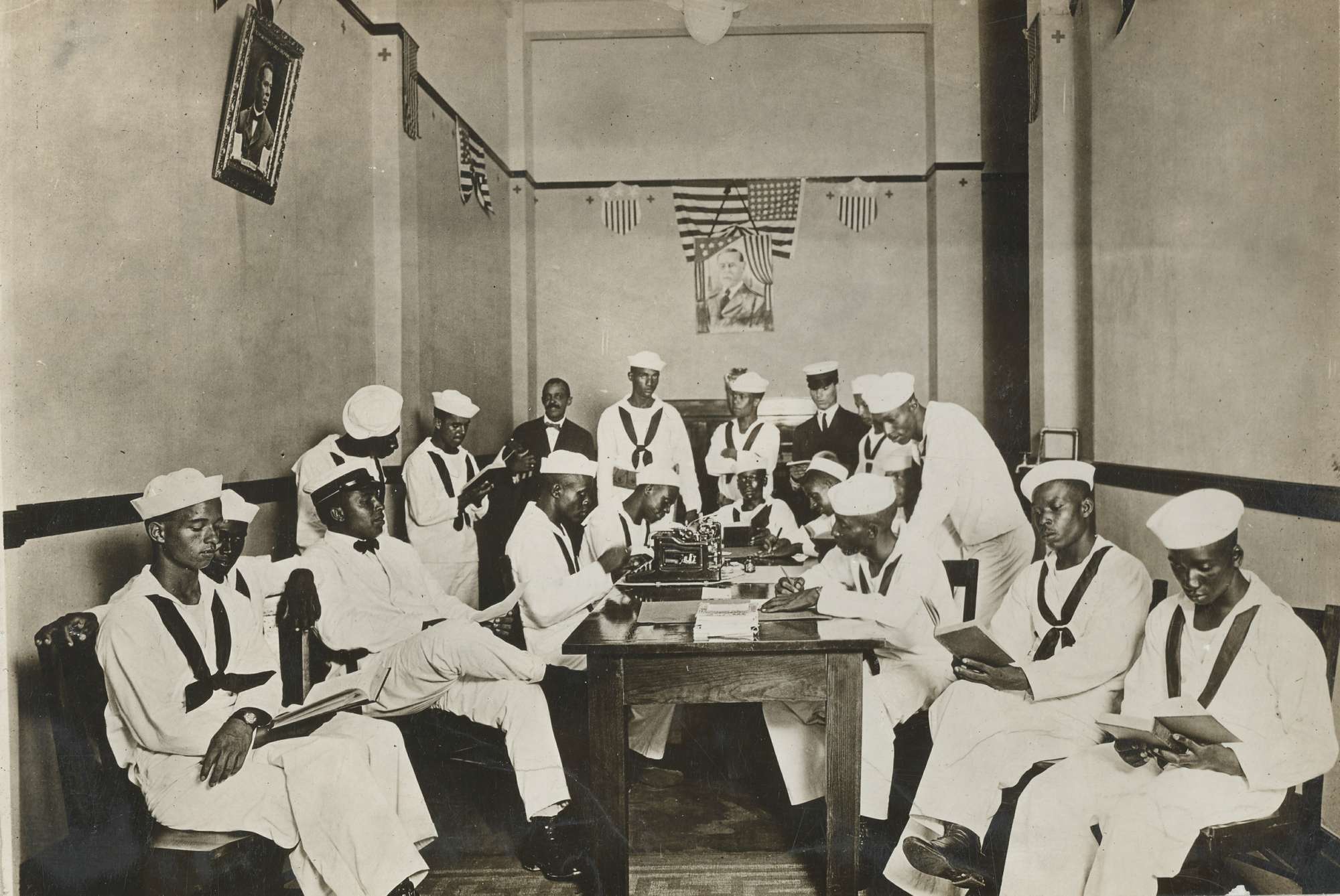
2
Activity Element
Charles Williams sent this letter and enclosed newspaper article about killings and the storming of a jail in North Carolina to President Woodrow Wilson. In speaking about support of World War I, he wrote that African Americans "contributed willingly to Liberty Bonds, War Savings Stamps and in other ways aided the great cause for Peace and Liberty."
3
Activity Element

4
Activity Element
As African American soldiers, the 369th Infantry were prohibited from participating in the farewell parade of New York's National Guard when they deployed in 1917 due to discrimination. The extraordinary valor of the men earned them fame in Europe and America and they were met with a victory parade when they returned home to New York in 1919.
5
Activity Element

6
Activity Element
On behalf of the Negro Fellowship League, Ida B. Wells wrote to President Woodrow Wilson calling out an order from a General in Kansas that restricted the movement of soldiers based on their color. She charged that it "destroys all civil rights."
7
Activity Element
African American soldiers served in segregated units during World War I.
8
Activity Element

9
Activity Element
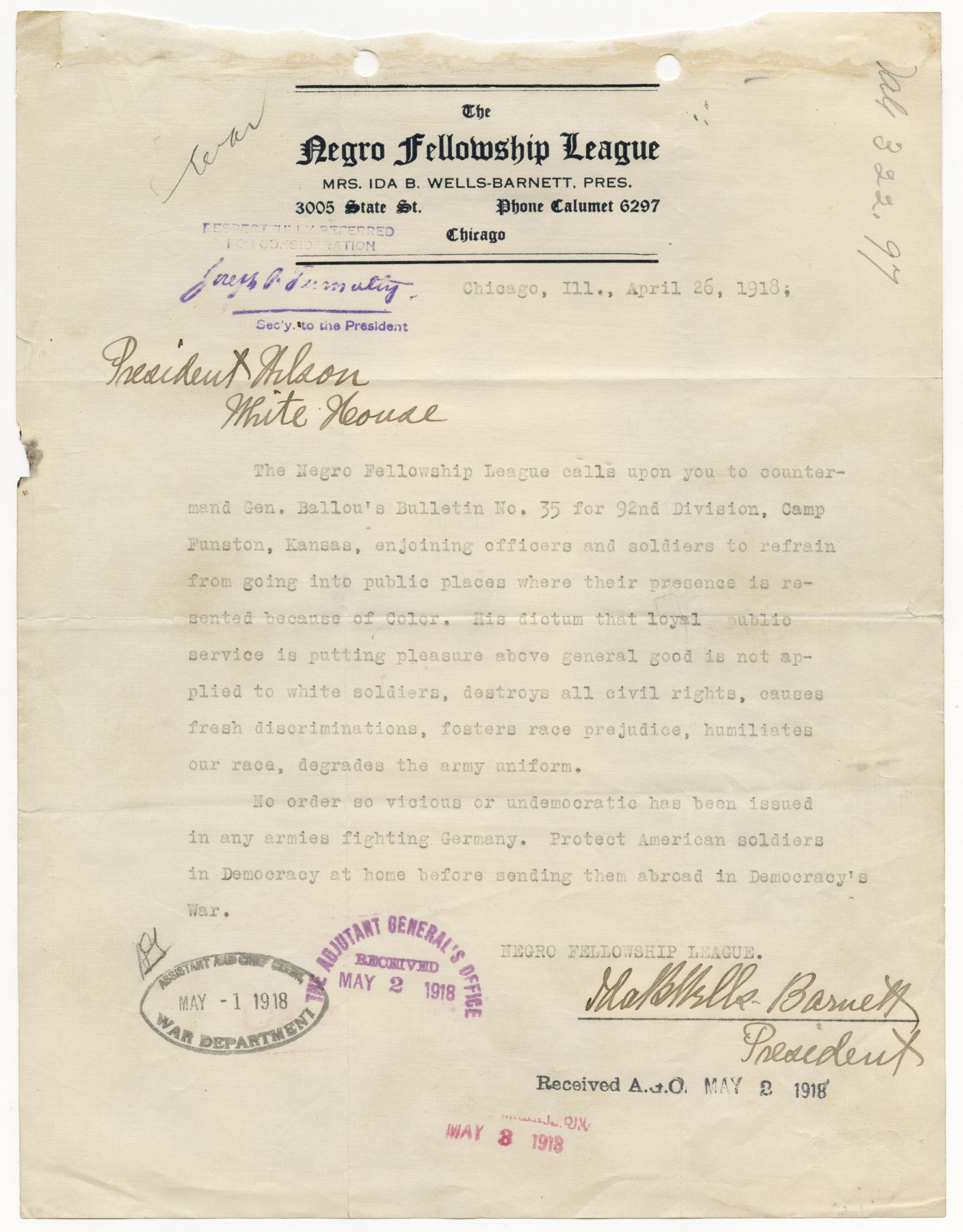
10
Activity Element
Recognized for their expertise in riding, African American cavalry noncommissioned officers of the 9th and 10th Cavalry Regiments, also known as the Buffalo Soldiers, were stationed at West Point to serve in the academy’s Detachment of Cavalry, and teach academy cadets military horsemanship. The detachment became a "colored unit" because the military was segregated.
11
Activity Element
African American soldiers were required to use segregated facilities during World War I.
12
Activity Element

Culminating Document
Letter from Timothy Percy Patterson to President Calvin Coolidge Regarding Racial Injustice in the United States following World War I
Page 1

Conclusion
African American Soldiers and Civil Rights During WWI
Seeing the Big Picture
Read the letter that you saw after making all of your matches. Click on "View Entire Document" to read the whole letter.African American Veteran Timothy Percy Patterson sent this letter to President Coolidge almost five years after the end of WWI. He wrote "I beg to inform that I still have no peace. I am yet fighting for Constitutional rights…"
Considering this letter and the other examples you saw in the activity, answer the following questions in preparation for a class discussion:
- What kinds of arguments do the letters make? What references to the war do they use? Why do you think the authors felt this reasoning would be effective?
- The final letter states that the writer is still fighting for Constitutional rights. What civil rights were denied to African Americans in the period following World War I? How were African Americans discriminated against?
Your Response
Document
American Negro Infantrymen at Roll Call Somewhere in France
Page 2
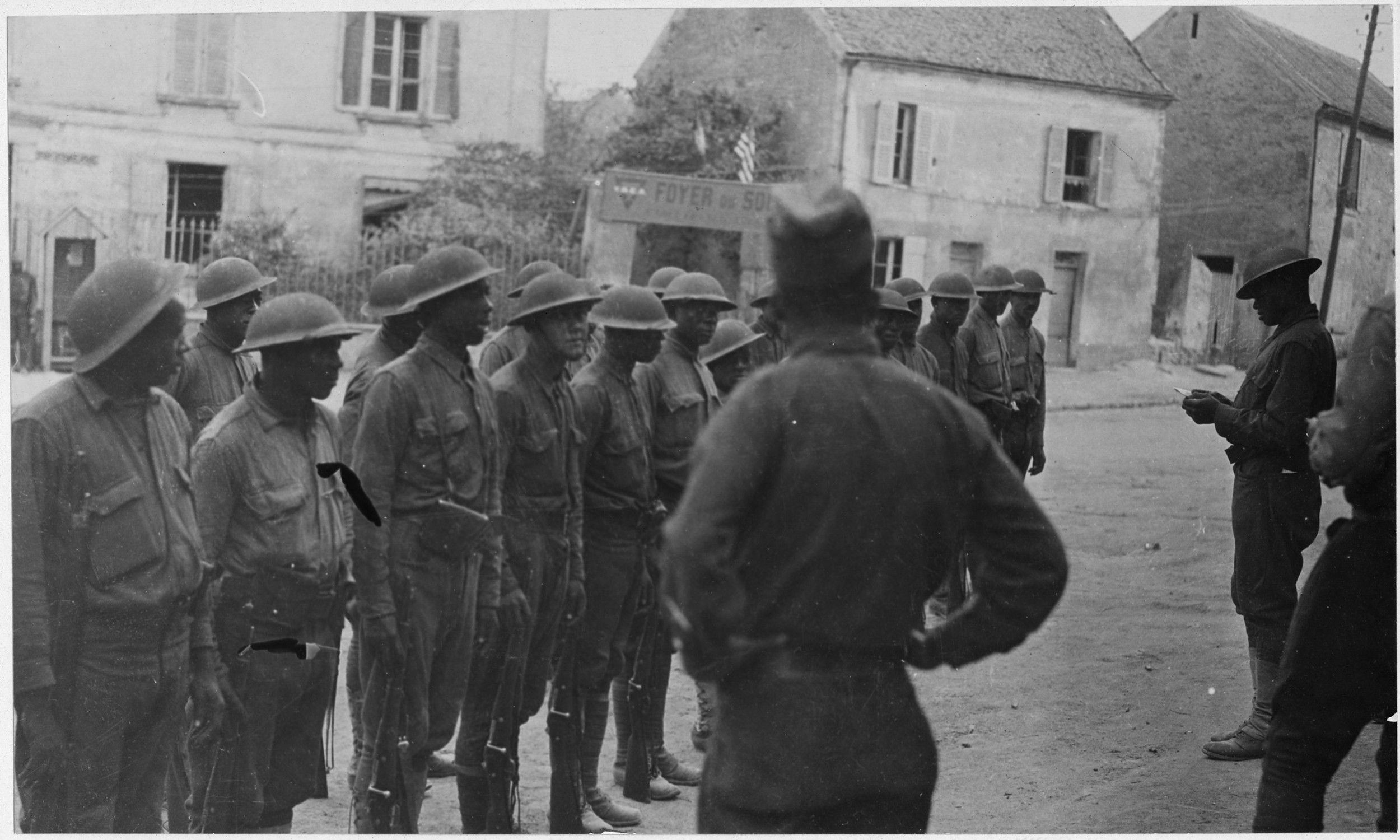
Document
American Red Cross Rest Room for Colored Soldiers and Sailors
Page 1

Document
Letter from Charles Williams to President Woodrow Wilson Regarding Lynching, with Enclosed Article about Killings and the Storming of a Jail in Winston-Salem, N.C.
Page 1

Letter from Charles Williams to President Woodrow Wilson Regarding Lynching, with Enclosed Article about Killings and the Storming of a Jail in Winston-Salem, N.C.
Page 2

Document
Famous [African American] regiment arrives home on the France. New York's famous 369th (old 15t . . .
Page 1
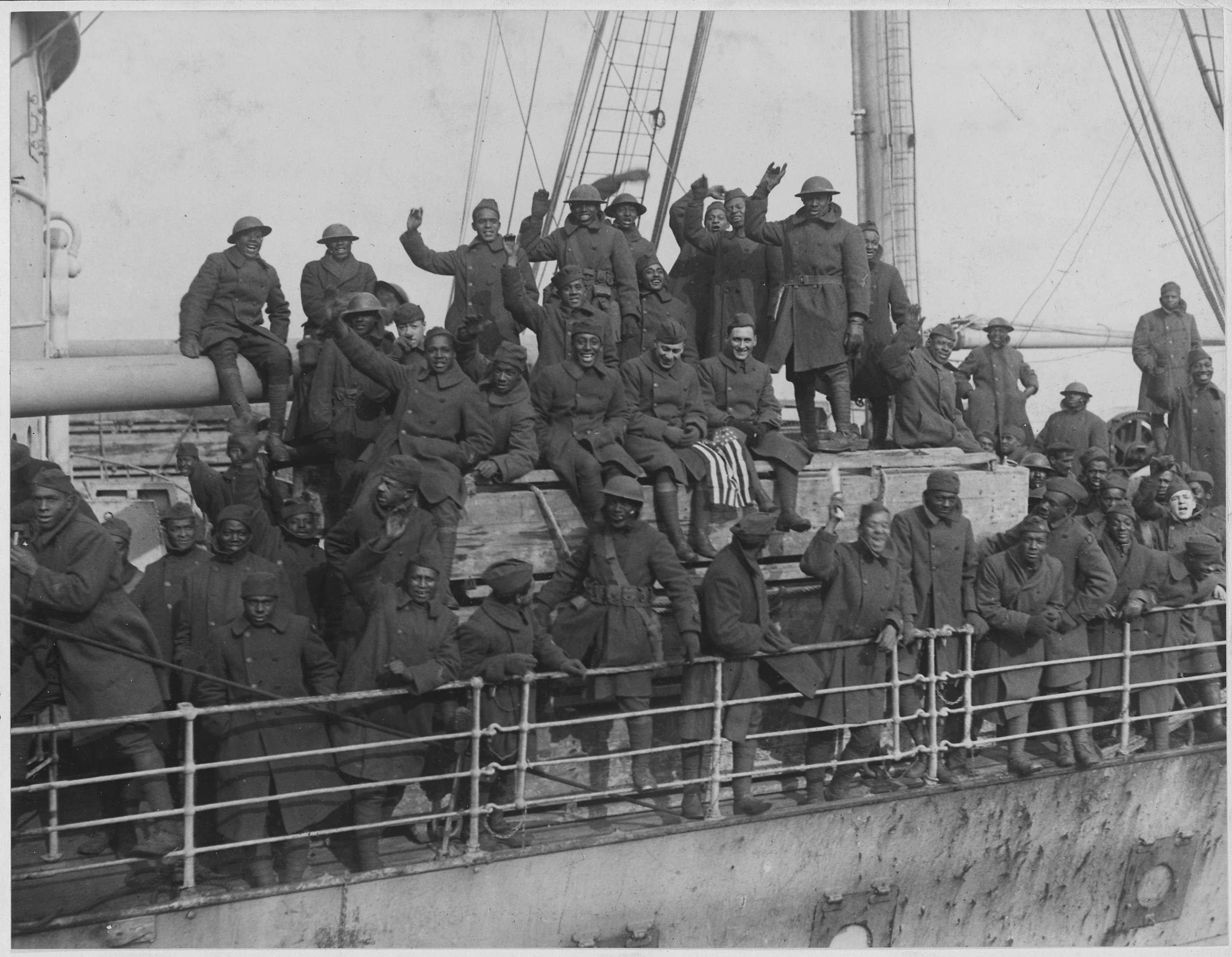
Document
Buffalo Soldiers Doing Equestrian Training in the Riding Hall at West Point
Page 1
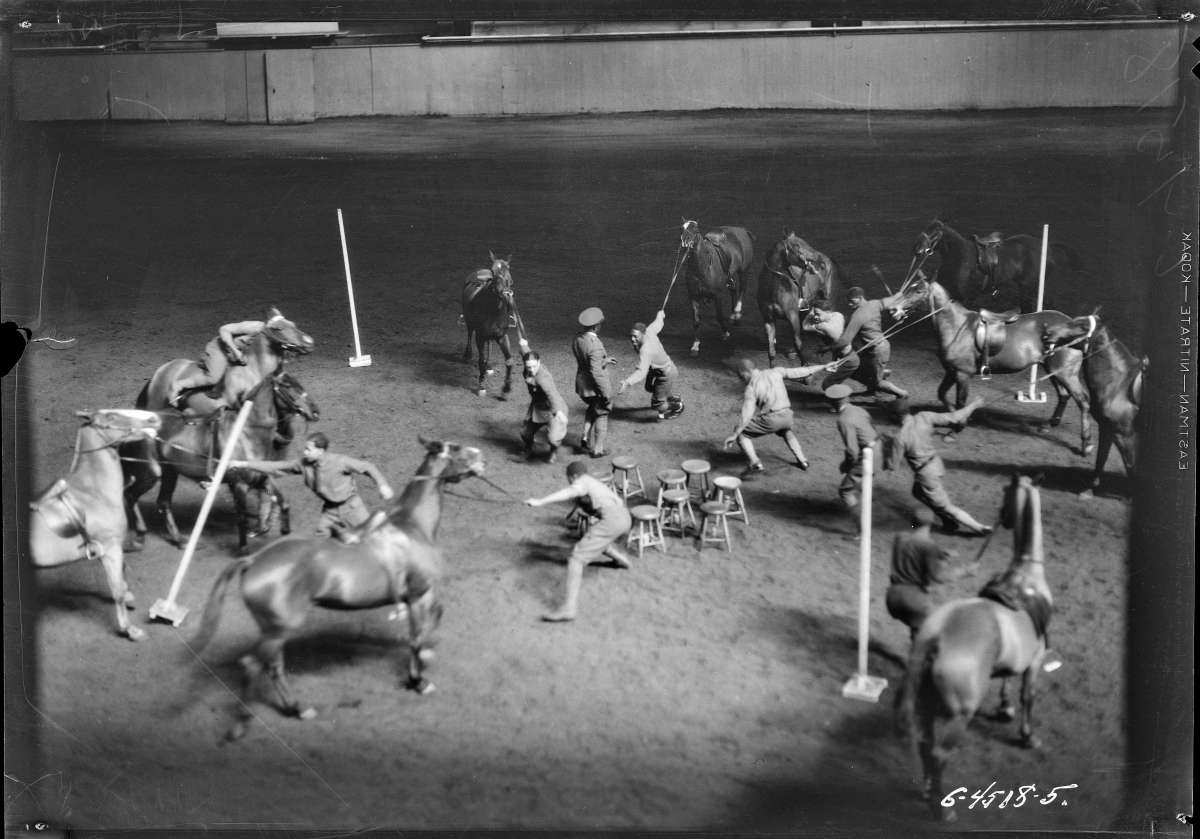
Document
Letter from Ida B. Wells-Barnett to President Woodrow Wilson Protesting General Ballou's Bulletin Number 35 for the 92nd Division, Camp Funston, Kansas
Page 1
